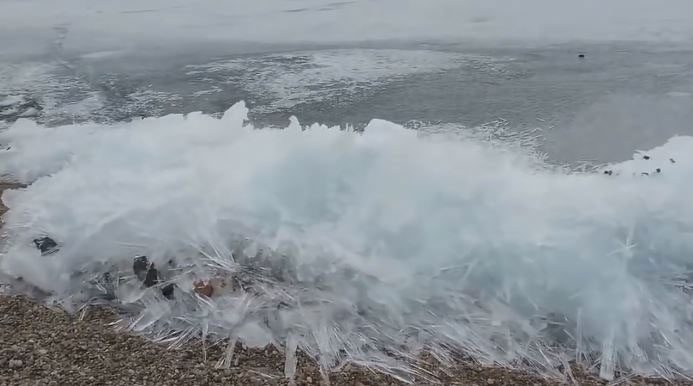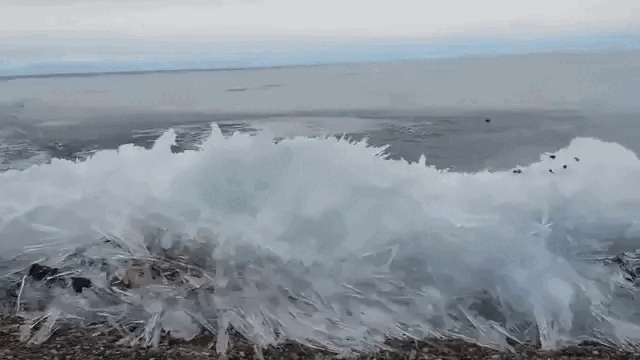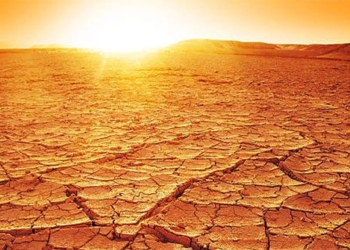The clip below showcases a unique phenomenon at Lake Baikal, the largest freshwater lake in the world. In winter, visitors to this location can witness the miraculous sight of waves continuously crashing against the shore, even though the surface of the water is frozen.

Waves crashing against the shore while the water surface remains frozen. (Photo taken from the clip).
Lake Baikal is the oldest and deepest freshwater lake in the world. It remains frozen for up to five months a year, with ice thick enough for cars to frequently drive across it. The cold temperatures lead to the formation of “ice waves” along the shoreline.
These ice waves move toward the large lake shore when the winter ice begins to melt and strong winds blow continuously. The necessary conditions for the formation of ice waves include large cracks on the lake’s ice surface, creating numerous ice floes that begin to melt. Subsequently, strong winds must blow for at least 12 consecutive hours. The force of the wind accelerates the massive ice blocks toward the shore. Although the ice moves slowly, it seems that nothing can stop it. The ice breaks apart and stacks on top of each other as it approaches the land. According to a study, the ice can be pushed about 400 meters in a few hours, even though it only encroaches a few meters inland.

Cold temperatures lead to the formation of “ice waves” along the shoreline.
The phenomenon of ice waves typically occurs at large lakes in Canada, northern United States, and Lake Baikal in Russia. It obstructs pathways along the lake shore, causing damage to trees and buildings. Witnesses of this spectacle report hearing a clattering sound from the ice that resembles a train passing by.
Lake Baikal is covered by ice for nearly five months each year. Every winter, when temperatures drop below 0 degrees Celsius, the surface of the largest freshwater lake in the world freezes. However, the ice does not start to form until mid-winter, long after severe frost episodes have begun in Siberia.
While other rivers and lakes freeze early in the year, Baikal continues to resist ice formation. Its cold waves crash against the shore, decorating the rocks along the coastline with frost patterns. But when it begins to freeze, typically in early January, it remains frozen for the next five months. The average ice thickness is about one meter, allowing cars and trucks to easily traverse it. The thickest ice can reach up to two meters.
The ice warms during the day and cools at night. This significant temperature variation causes the ice to crack. These cracks typically do not exceed 0.5 to 1 meter in width, but they can occasionally widen to 4 meters and extend for hundreds of meters.
Another unique feature of the ice at Lake Baikal is the “hummocks” – or ice waves – piles of broken ice pushed up on the surface. Hummocks form during the freezing process when weak ice is shattered by the wind and thrown ashore. They typically form along cracks or the shoreline and can reach heights of 10-12 meters.




















































